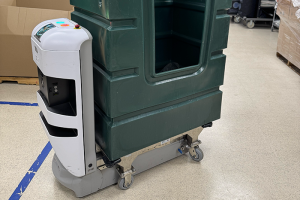Environmental Services
Pest prevention tips for health care facilities
Proactive measures environmental services professionals can take to stop pests in their tracks
|
The best defense against health care facility pest infestation problems is to prevent the situation from occurring in the first place. Environmental services professionals should consider the following measures when devising their integrated pest management programs.
Exclusion. This encompasses basic measures that may keep pests from entering the facility.
- Install door sweeps and weather stripping around all doors and windows as well as window screens.
- Seal all cracks and crevices inside and outside of the facility.
- Seal all entry points around utility penetrations.
- Install double doors and air curtains for an added pest barrier.
Sanitation. This includes actions that prevent conditions where pests may thrive.
- Thoroughly clean, dust and sweep to remove dust and dirt buildup or cobwebs.
- Follow a strict daily sanitation regime and remove such clutter as cardboard boxes that offer shelter for pests.
- Remove all food and water spills immediately and store all food and garbage properly in sealed containers.
- Repair leaking faucets, water pipes and HVAC units.
- Get rid of standing water on the roof and keep gutters and downspouts clean.
Landscaping. Various grounds-maintenance measures help top revent infestations.
- Move plants away from the facility’s foundation.
- Remove excessive plant cover and wood mulch outdoors as well as trim overgrown branches, plants and bushes.
- Install a 30-inch gravel strip around the perimeter of the facility to obstruct crawling pests and discourage pests that don't like being in the open, such as rodents.
Ongoing inspections. This encompasses a range of observations that can halt pest problems in their earliest stages.
- Inspect the facility’s exterior and interior for signs of a pest infestation or potential points of entry.
- Inspect items that are prone to pest activity, such as incoming shipments and cardboard materials.
- Manage pest populations that can lead to other pest problems like fly or spider infestations.
Also in this article |
| Diagnosing health facility pest activity |
|
|



